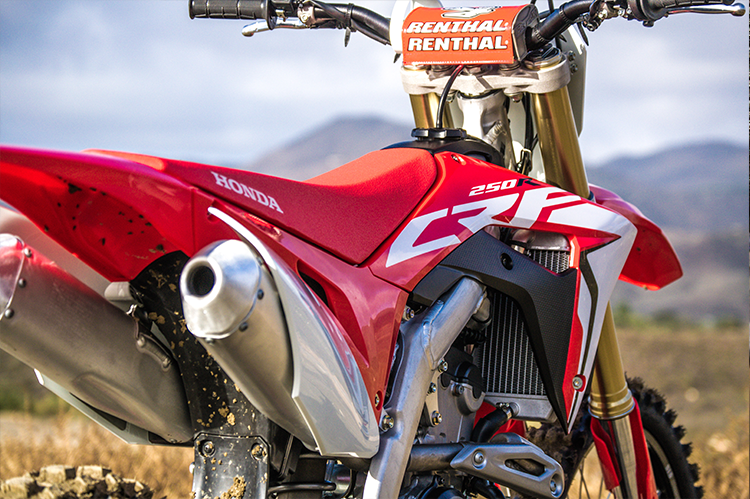Better Than Ever?
Story and Photos by Trevor Hunter
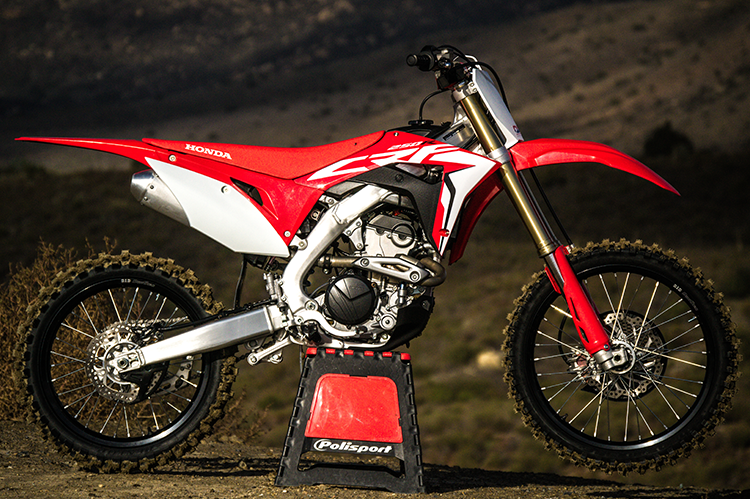
Honda made quite a few changes to their 2019 CRF250R after the unveiling of an all-new model in 2018 and we recently headed out to Fox Raceway for a first ride at the 6th Annual Kurt Caselli Ride Day. We received quite a bit of rain in the days leading up to the weekend leaving the tracks a bit sloppy and full of ruts – something us SoCal regulars aren’t accustomed to.
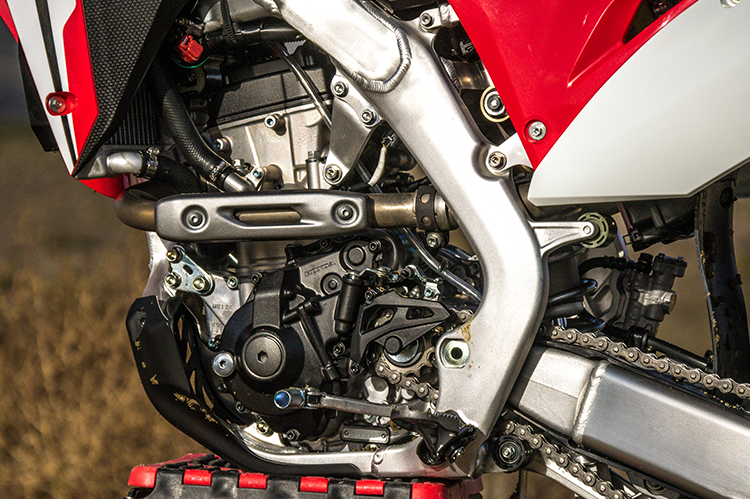
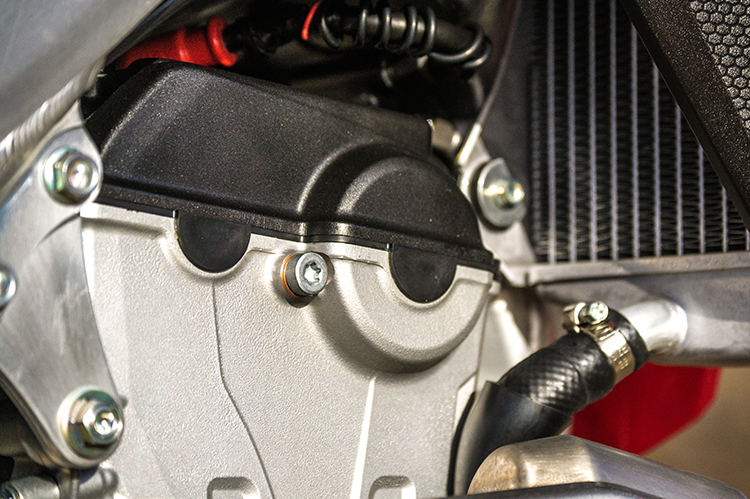
Most of the changes in 2019 were in the motor department with a focus on increasing bottom end power. Included in those changes are new intake and exhaust-port geometry, a smaller 44mm throttle body (down from 46mm) and a new cam profile. Additionally, a 50mm shorter right side exhaust is claimed to improve top end performance. For optimized cooling, a fifth piston oil jet was added for a cooler running piston while external engine guards allow better airflow to the engine. Ergonomically, the upper triple clamp now features two different mounting positions along with bar mounts that rotate for an additional 10mm of adjustment back and forth. Similar to the CRF450R, the 250R has a mapping switch with 3 different maps (standard, aggressive, and smooth) and launch control. The final changes for the new model year are new fork protectors, and Renthal Fatbar, a new front brake caliper with 27m and 30mm diameter pistons, a new front brake line, and black rims to complete the look.
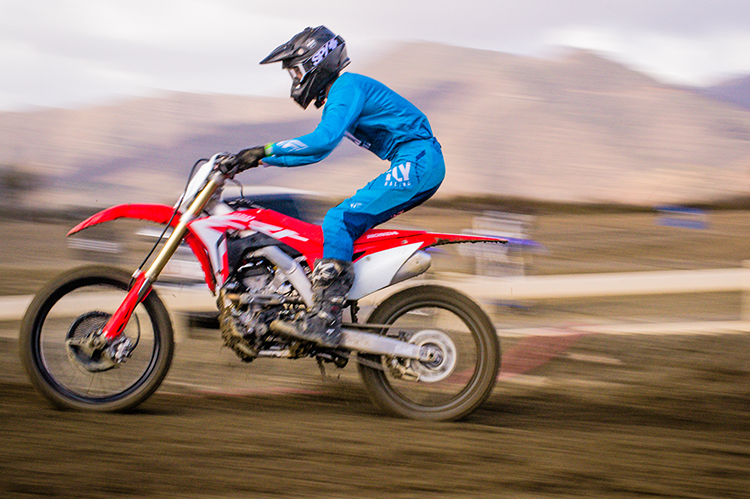
In the 250cc class, power is everything and the Honda has quite a bit of it. Just not in some areas. Like last year, the small bore CRF is still a bit underpowered in the bottom end compared to some of its competitors. We often found ourselves giving a quick hit to the clutch coming out of corners just to give it a little more pop down low. Once you get into the mid-range, the little CRF hit its sweet spot where it carried the power into the top end as it revved on and on. This bike certainly likes to be ridden in the higher RPM’s and we felt like it needed to be ridden like a 125cc two-stroke. Riders who keep it on the pipe and like to get aggressive will gel with this bike and fast, flowy tracks like Cahuilla Creek MX will make this bike happy. The track was deep and sloppy with ruts that didn’t have much flow in them and rutted straightaways which didn’t help the 250R showcase its motor’s highlights.

The throttle response on this bike is good, so long as you’re in the upper RPM ranges. Also, the gearing felt like it was pretty close. With more time on the bike and in normalized conditions, we’ll be able to get a better feel for what changes need to be made, if any at all. The clutch held up over the couple hours of riding we got in with no fade or signs of wear, though we weren’t trying to abuse it too much. Shifting was smooth and precise just as we’d suspect. We didn’t spend enough time messing with the different engine maps but we’ll certainly be using them to their potential in the coming weeks along with the HRC inspired launch control that worked favorably on its big brother – the 450R.
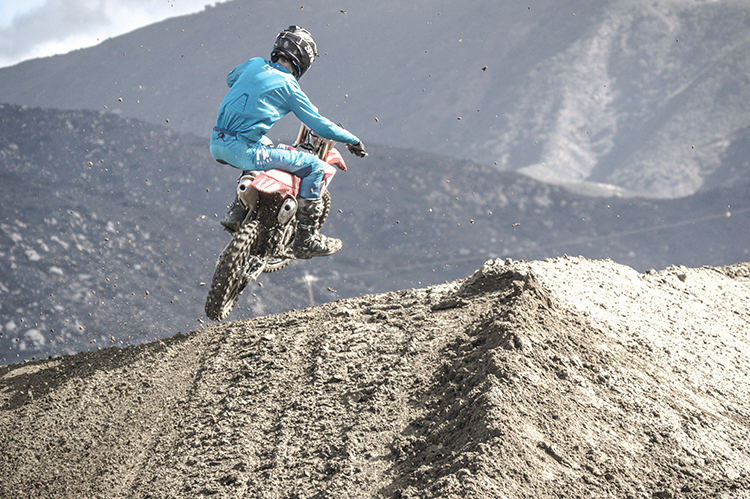
Onto the suspension side of things, with the abundance of mud and lack of bumps and jumps on this day it was tough to get our normal feel. The bike gained a considerable amount of weight with mud and rode acceptable, but the conditions were not ideal for testing. Overall, it felt good and we didn’t make any changes as of yet, but more seat time on different tracks will give us a better feeling.
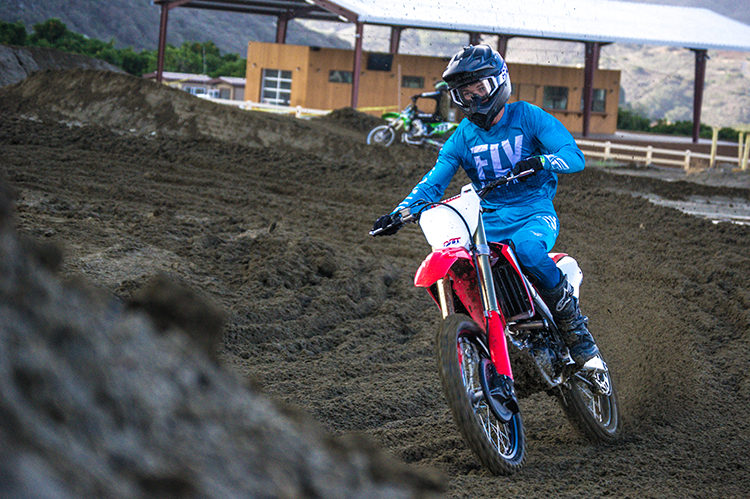
The handling of this bike is one of its strong points. Similar to the motor, it favors aggressive riding and it’ll go wherever you tell the bike to go. It offered both stability and turning capabilities, though we’ll need some more time to really get a good feel for the chassis-handling characteristics. The brakes on Honda’s have always been one of their strong points and 2019 is no different. The front brake stood out with its powerful, yet controllable feel and it had us adjusting our braking points because of how good it worked.
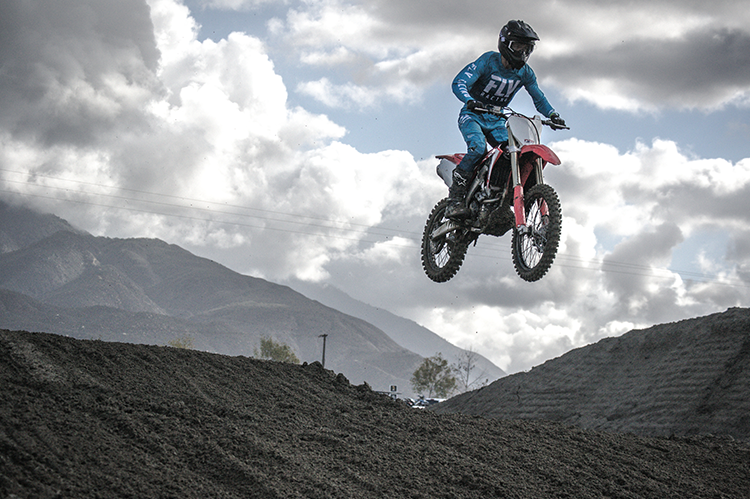
We started the day with a bit of disappointment in the bike – some due to the challenging track conditions that we struggled in at first, but also some due to the bike. Once we went back to a 125cc two-stroke mindset, we became much more appreciative of the Honda’s power and handling and the fun factor increased quite a bit. The typical four-stroke way of riding is a bit lazier and let the bike do most of the work, but the Honda changes that. RPM is the price you pay for high horsepower, especially in a stock bike.

So, do the changes made to the 2019 CRF250R translate to better performance on the track? We can’t answer that just yet. We’ll have a more in-depth analysis soon with riders who have experience on the previous model on more familiar conditions in out full test for sure. Overall, the same general comments from last year’s impression to this one seem to hold up, but that’s not to say that Honda didn’t make any improvements. We’ll continue to spin laps on the new CRF250R in a variety of conditions to give you the news in the coming weeks. Stay tuned!
